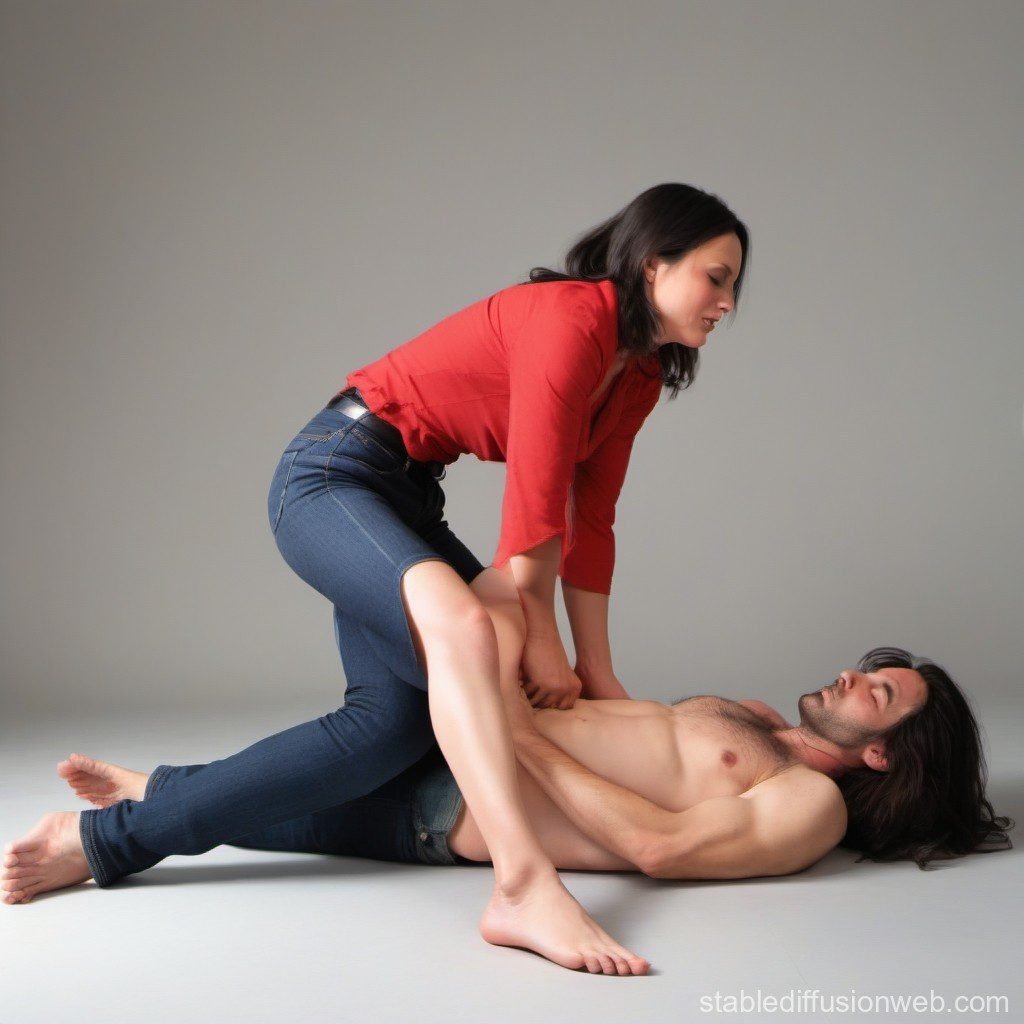The headscissor is a powerful grappling technique often used in martial arts, wrestling, and combat sports. This submission hold, when executed correctly, can immobilize an opponent and force a quick tap out. Understanding how to apply, defend, and escape the headscissor is essential for any athlete aiming to excel in competitive grappling or mixed martial arts (MMA). This article delves into the mechanics of the headscissor, its effectiveness in combat, and how you can incorporate it into your arsenal of techniques.
You may also read:Malia Manocherian: A Rising Star in Philanthropy and Wellness
What is a Headscissor?
In its simplest form, a headscissor involves trapping your opponent’s head between your legs and applying pressure. The technique can be employed both offensively, as a submission, and defensively, to control your opponent’s movement. The strength of this hold lies in the ability to compress the opponent’s neck, restricting blood flow or airflow, leading to a submission.
Combat sports such as Brazilian jiu-jitsu (BJJ), wrestling, and judo regularly feature variations of the headscissor. Its versatility makes it effective across different scenarios, from top control to guard positions.
Why Use the Headscissor Technique?
The headscissor is widely regarded for its flexibility in both positioning and outcomes. Here are some key reasons why fighters opt for the headscissor:
- Control: The headscissor can neutralize an opponent’s mobility, making it difficult for them to escape or mount an offense.
- Submission Potential: When applied with enough pressure, the headscissor can cause pain or restrict an opponent’s breathing, forcing them to submit.
- Transitioning: This technique allows you to transition to other dominant positions or submissions, making it an excellent part of a broader grappling strategy.
In a competitive setting, fighters can catch opponents off-guard with this technique, leading to quick finishes or setting up for more dominant submissions.
Executing the Headscissor: Step-by-Step
Mastering the headscissor requires precision, control, and timing. Here’s a breakdown of how to execute it effectively:
- Positioning: Start by establishing a dominant position, either in the guard or side control. Ideally, you want to ensure your legs are aligned with your opponent’s neck or shoulders.
- Lock the Legs: Once your opponent’s head is positioned between your thighs, cross your ankles to secure the lock.
- Apply Pressure: Squeeze your thighs together, creating pressure on the opponent’s head and neck. If you’re using the scissor for a submission, increase the force gradually.
- Control Your Opponent’s Movement: Use your body weight and core strength to prevent your opponent from escaping. Leaning your upper body back slightly can create additional leverage.
- Finish or Transition: If the submission doesn’t succeed, you can transition to another position or submission, such as an armbar or triangle choke.
Variations of the Headscissor Technique
There are several variations of the headscissor, each suited to different combat situations:
- Standing Headscissor: This is often seen in professional wrestling, where the attacker traps the opponent’s head while standing. Though less common in grappling, it can be used in self-defense or unconventional situations.
- Guard Headscissor: A popular variation in Brazilian jiu-jitsu, this involves trapping the opponent’s head while in guard. It can transition easily into a triangle choke.
- Side Control Headscissor: Applied from a side control position, this variation leverages body weight to increase pressure on the opponent’s neck and restrict movement.
These variations showcase the versatility of the headscissor, offering a range of options depending on your positioning and goals in the fight.
Is the Headscissor Effective in MMA?
Mixed martial arts (MMA) fighters use the headscissor both as a submission tool and a method to control their opponent. While not as common as other submissions like the armbar or triangle choke, the headscissor can be highly effective when applied in the right context.
One of the key strengths of this technique in MMA is its unpredictability. Because it’s not frequently used, fighters may not expect it, giving you an edge in combat. Additionally, the headscissor can serve as a transition move, enabling you to switch to other submissions or dominant positions with ease.
However, it requires strong leg muscles and excellent control to apply successfully, particularly when fighting against high-level opponents who are skilled at defending submissions.
How to Defend Against the Headscissor
Understanding how to defend against a headscissor is just as important as learning how to execute it. Here are a few key defense strategies:
- Positioning: If you anticipate the headscissor, maintain strong posture and avoid allowing your head to be trapped between your opponent’s legs. Keep your chin tucked and be ready to escape.
- Hand Fighting: Use your hands to block your opponent from securing their legs around your head. Controlling their hips and legs can also prevent the full application of the headscissor.
- Escape Techniques: If caught in the hold, attempt to twist your body to the side or use leverage to create space between your head and your opponent’s thighs. Quick, explosive movements can help break free before the submission is fully locked in.
Proper defense minimizes the risk of getting caught in the headscissor, giving you a better chance of avoiding a submission.
Training Tips for the Headscissor
Like any other submission, mastering this takes time and practice. Here are some tips for improving your technique:
- Strengthen Your Legs: Building leg strength is critical for executing a strong and effective headscissor. Exercises such as squats, lunges, and leg presses will help you generate more power.
- Work on Flexibility: Flexibility, particularly in your hips and thighs, can enhance your ability to apply the headscissor from different angles.
- Drill with a Partner: Practice with a partner to perfect your positioning, pressure, and transitions. Repetition helps you develop muscle memory, making the move easier to execute in live combat.
By focusing on these aspects during training, you’ll be able to improve your headscissor and integrate it more effectively into your grappling game.
Advantages in Self-Defense
In addition to its use in combat sports, this can be a valuable self-defense technique. In a real-world altercation, trapping an attacker’s head and applying pressure can neutralize the threat and give you time to escape. Its effectiveness in close-quarters combat makes it a practical option for self-defense situations, especially for individuals who may not have formal training in martial arts.
Common Mistakes to Avoid
While the headscssor is a powerful move, there are several common mistakes that can reduce its effectiveness:
- Incorrect Positioning: If your opponent’s head isn’t properly aligned, you won’t be able to generate the necessary pressure for a submission.
- Weak Leg Lock: Failing to secure your legs tightly around your opponent can give them the opportunity to escape or counter the move.
- Overcommitting: Focusing too much on forcing the submission can lead to missed opportunities for transitions or counters, especially if your opponent defends it effectively.
Avoiding these mistakes will improve your success rate when using the headscissor.
Conclusion
The headscissor is an impressive and versatile submission technique in combat sports, offering both offensive and defensive benefits. Whether you’re a Brazilian jiu-jitsu enthusiast, a wrestler, or an MMA fighter, mastering this can elevate your grappling game. By honing your positioning, leg strength, and transitions, you’ll be able to apply this powerful hold in both competition and self-defense scenarios.
Frequently Asked Questions
What is a headscissor?
It is a grappling technique where the opponent’s head is trapped between the attacker’s legs, applying pressure to control or submit them.
Is the headscissor effective in Brazilian jiu-jitsu?
Yes, it is effective in Brazilian jiu-jitsu, particularly in guard positions where it can transition into other submissions like the triangle choke.
Can you escape a headscissor?
Escaping requires proper defense techniques, such as hand fighting and posture control, to prevent your opponent from securing the submission fully.
Is the headscissor used in MMA?
While not as common as other submissions, the headscissor can be used effectively in MMA to control or submit an opponent, especially if executed with precision.
How can I strengthen my legs for the game?
Leg-strengthening exercises such as squats, lunges, and leg presses will help you generate more power for applying pressure in the this.
What are the common mistakes when applying the headscissor?
Common mistakes include incorrect positioning, a weak leg lock, and overcommitting to the submission without considering transitions or defenses.




